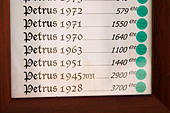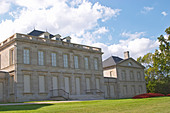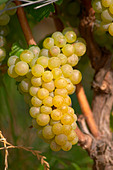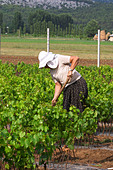BKWine Pick: Restaurant Gabriel, Bordeaux
>> Monday, May 31, 2010
Restaurant Gabriel, Bordeaux
 Place de la Bourse is one of the gems of architecture in Bordeaux. As if it needed added attractions there is now, since a year back, a restaurant called Gabriel (after the architect of La Place) that adds one more reason to go there. Located in the most beautiful of the buildings on La Place it is split in three levels. On the ground floor there’s a bar with outside seating (lovely). One floor up there’s the bistro and on the second floor there’s the gourmet restaurant that already, after only 8 months, has been given one star by the Michelin guide. In the bar, called Les Dix, you can also have a sandwich or a salad. In the bistro you can get a three course menu for 28 euro – must be one of the best value for money in Bordeaux, so go there before prices go up! The starter can be for example foie gras (duck’s liver), carpaccio of daurade (sea bream) or a very tasty leek in vinaigrette (a classic French bistro starter) and parmesan. For main course we’ve tried the filet de bar (sea bass) with saffron rice and almonds, a grilled steak with red wine sauce, or a leg of chicken with green peas and lemon. And to finish of perhaps a tiramisu, a strawberry soup, or a grape fruit gratin? All is excellent! We have not yet tried the second floor but we don’t doubt that it will be excellent. Don’t forget to book in advance!
Place de la Bourse is one of the gems of architecture in Bordeaux. As if it needed added attractions there is now, since a year back, a restaurant called Gabriel (after the architect of La Place) that adds one more reason to go there. Located in the most beautiful of the buildings on La Place it is split in three levels. On the ground floor there’s a bar with outside seating (lovely). One floor up there’s the bistro and on the second floor there’s the gourmet restaurant that already, after only 8 months, has been given one star by the Michelin guide. In the bar, called Les Dix, you can also have a sandwich or a salad. In the bistro you can get a three course menu for 28 euro – must be one of the best value for money in Bordeaux, so go there before prices go up! The starter can be for example foie gras (duck’s liver), carpaccio of daurade (sea bream) or a very tasty leek in vinaigrette (a classic French bistro starter) and parmesan. For main course we’ve tried the filet de bar (sea bass) with saffron rice and almonds, a grilled steak with red wine sauce, or a leg of chicken with green peas and lemon. And to finish of perhaps a tiramisu, a strawberry soup, or a grape fruit gratin? All is excellent! We have not yet tried the second floor but we don’t doubt that it will be excellent. Don’t forget to book in advance!
Click here for address and more recommendations.
































